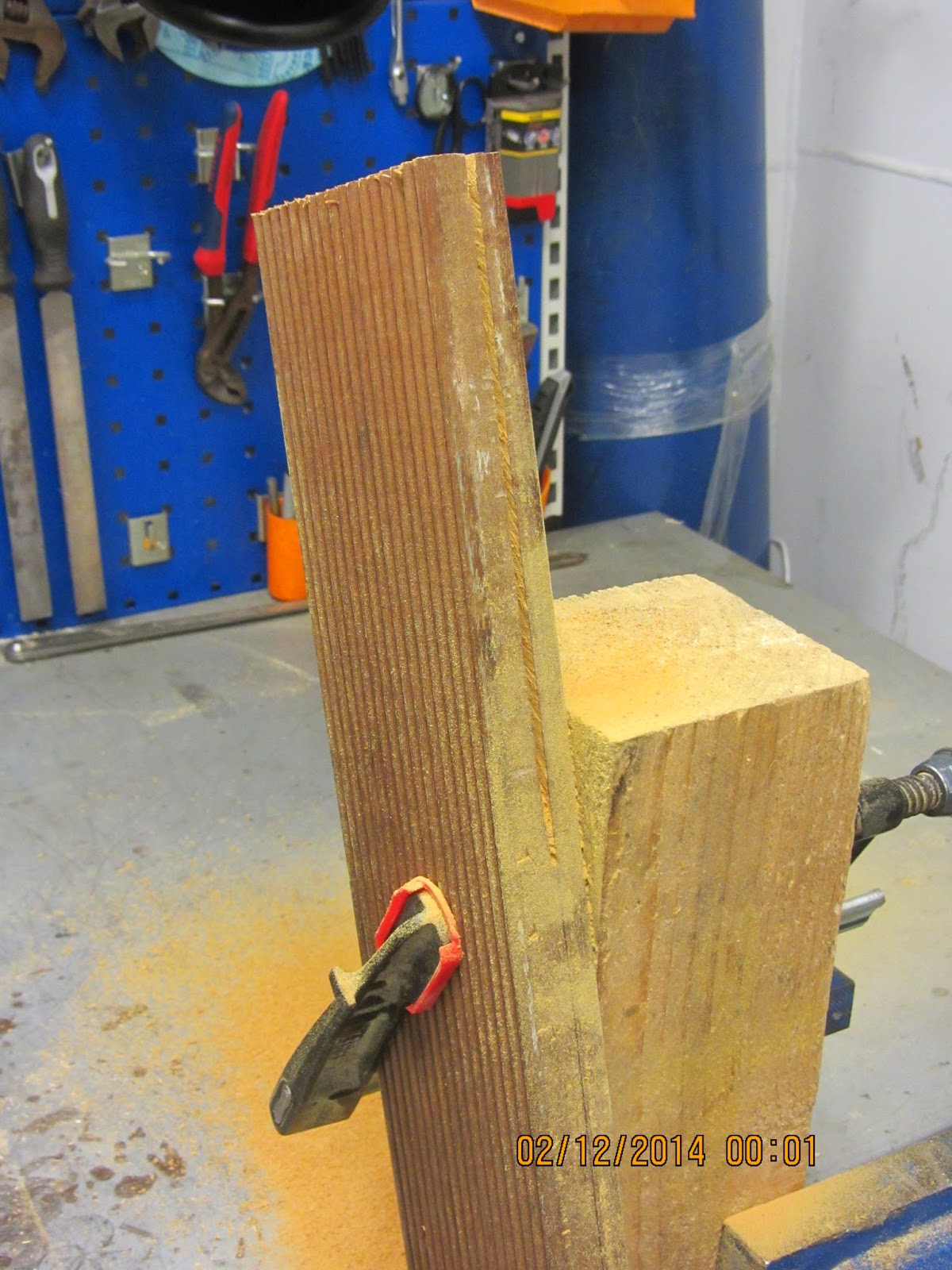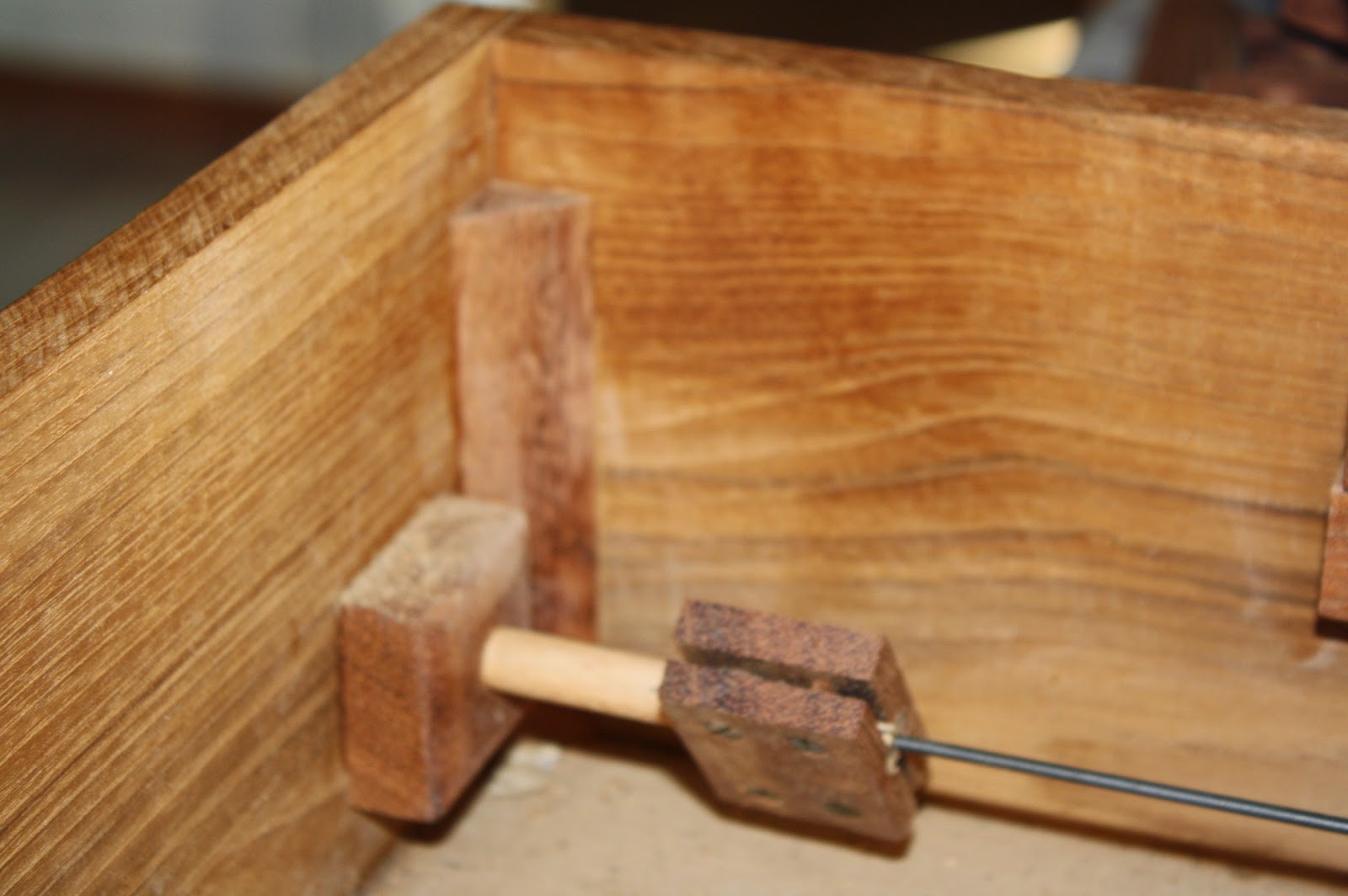As some of you may remember, I made a tool chest for the sea last year. During the last year I have built a couple of projects using the tool kit, so I feel that I can give an honest review of it.
The projects I have built have all been limited in size to something that could be transported as luggage on an air plane. The following is a list of the projects I have made on board. Some of them I finished at home, because I don't like to leave a project on board when I go home.
Seaborne chest
Cabinet with many drawers
A carved name sign
Fairy tale princess bed
Tumblehome sea chest.
The recent carved sign for Aslan Fenix
A Gerstner inspired tool chest.
We are only signed on for 4 weeks at the time, and things really have to go smooth for me to be able to finish a project in that time. sometimes we are prevented by the weather or fatigue, so woodworking out here for me is something I do to relax and get my mind to slow down. The process out here really is more important than the result.
The tool set I bring with me is stored in a home made tool chest. Due to the fact that it needs to go in my suitcase on the air plane, this chest had to be light and not too big.
I made it out of 5/16" thick larch that was dovetailed together. The top and bottom are made from 6mm birch plywood.
The chest has been damaged by luggage handlers throwing my bag around, but it still holds up. I have re glued it a couple of places earlier, and I can see that it is time for me to do it again.
I guess that I should have glued in some triangular reinforcements in all corners.
These are the tools of the ship that I use for my woodworking:
Hammer.
Multi purpose wood saw (Fuchsschwanz), doubles as a straight edge for marking lines.
Try square.
Clamp.
Hack saw which I normally use as a dovetail saw.
Measuring tape or folding rule.
Once in a while I use a drilling machine, but that is not very often, but those are on board as well.
My own tool set can be seen on one of the pictures below, and consists of:
3 chisels, 1/4", 1/2" & 1"
A small dozuki saw
Mallet.
2 brushes for glue
A jar of white glue
Plane
Smoothing iron for the plane
Scrub iron for the plane
Grooving plane
Marking gauge
Sanding block
Home made router plane with an extra narrow iron.
Oil stone for polishing
Pencil
Linoleum carving chisels (the newest addition to the chest)
Sandpaper grade 80 and 150 (as far as I remember)
Shooting board which is incorporated in the lid of the tool chest
I also bring a bit of hardware, all of it is in the small size:
Brass screws
Brass nails
Finishing nails.
Brass hinges (3 pairs)
An inset lock
Galvanized hinges (1 pair)
Turned drawer pulls (the dark stuff in a bag, they are very small)
A piece of a bone.
Some small pieces of cardboard to use for dovetail gauges.
A bit of emery cloth.
The only thing I have sometimes felt that I was missing is a jointer plane. But that has mostly been an issue if I had to glue up some sort of panels. Jointing two edges is not what a smoothing plane is designed to do.
Apart from that it is a pretty powerful tool kit when combined with the few items I need from the ship.
You can theoretically get by with only one clamp for work holding, but having more is advantageous in case you need to glue up something.
The tool I use the least is the 1" chisel, but I still like to use it for paring and if I make large dovetails.
The tool that makes the biggest difference is the scrub plane, or in my case the scrub iron for the smoothing plane. Being able to quickly process stock makes a huge difference.
Second on the list of tools that make a difference is the grooving plane. Because this enables you to make a wide variety of things: Tongue and groove boards, Grooves and dados, I even used it when I made a raised panel. The great thing with the grooving plane compared to a real plough plane is that at least the Stanley No 248 is so small that it will easily fit in a small tool set like this. I only have 1 iron for it (5/32"), but if I make multiple passes that doesn't pose a problem.
My conclusion is that the set is working pretty good for the type of projects that I do while on the water. But the tool chest itself should probably have been a bit sturdier made in the first place.
Damaged lid.
Lower chest cracked along the groove for the bottom.
Tools of the ship.
The line up of my own tools.
The shooting board.
Hardware assortment.
The tools neatly tucked in the chest.

















































